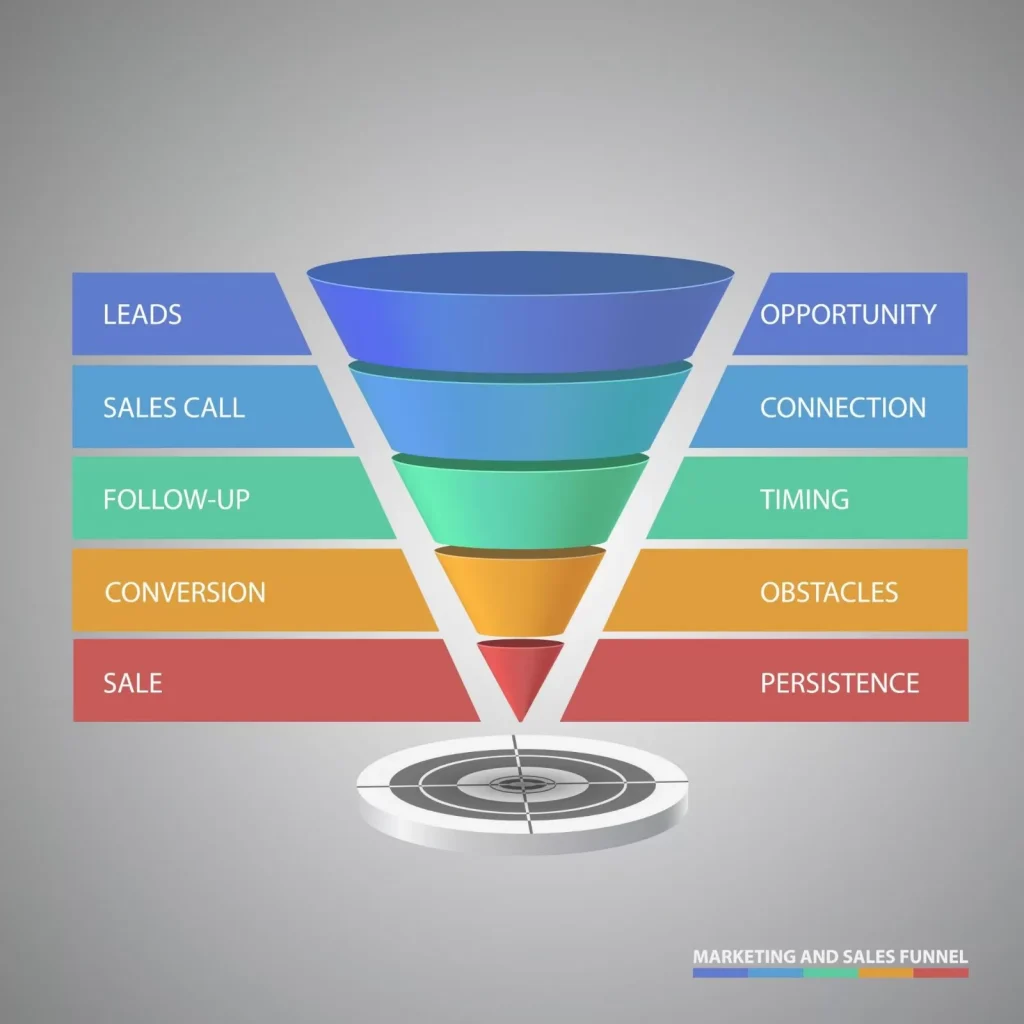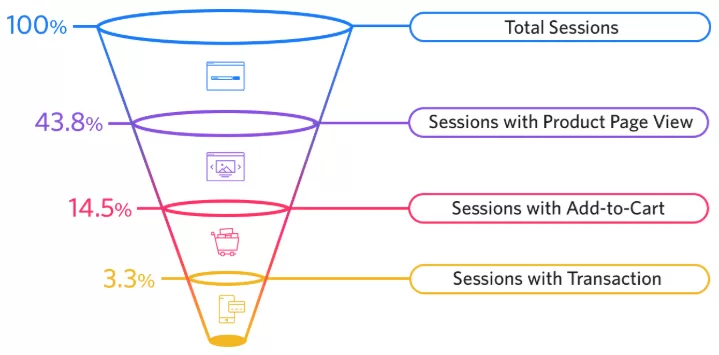When people visit your e-commerce store, you want them to fill up their carts and spend lots of cash. That’s natural. But what if they don’t?
Consumers lead active lives. They’re always hunting for information online, and sometimes they don’t act right away — at least in the way you want them to. For instance, visitors might bounce immediately. They get called away from the computer screen or they arrive at their destinations and shut off their mobile devices.
Whatever the case, you can’t always snag a customer on the first visit. You can, however, bring them into your ecommerce conversion funnel. Start the process of converting them from leads into customers. On YouTube, LinkedIn, and Facebook, you probably have tons of questions about how to build and optimise an ecommerce conversion funnel. It’s harder than it looks.
What is a Conversion Funnel in Ecommerce?
A conversion funnel in e-commerce illustrates the route your customers take from first becoming aware of your brand to making a purchase. It also includes customer retention, upselling, cross-selling, and subscription-based models.

Every business has a different ecommerce conversion funnel depending on the specifics of how users navigate their businesses. The stages are the same, but the specifics depend on your product and audience.
For instance, some businesses have shorter conversion funnels. When you sell a low-cost product, you can convert visitors faster because price becomes less of an obstacle.
The Importance of Creating a Ecommerce Sales Funnel in how to boost your ecommerce store conversions
If you don’t know what your ecommerce conversion funnel looks like, you can’t optimise each stage for maximum sales. Knowing which areas impact conversions the most lets you hone in on those areas and optimise your funnel.
For instance, your research might indicate that social media — specifically Facebook — plays a tremendous role in conversions. Your large group of followers pays attention to your posts about discounts and promotions.
When you have that data, you can take action on it by boosting your Facebook activity and encouraging your website visitors to follow you on Facebook. By placing a prominent CTA for Facebook, you take advantage of existing website and draw people into your social sphere.
What is the Average Conversion Rate for Ecommerce?
Since we’re talking specifically about the e-commerce conversion funnel, we turned to Smart Insights for a visual representation of the average conversion rate that a business might expect to see on their website.

This sales funnel example shows that, out of the total sessions (visitors on your website), nearly 50 % will look at a product page, yet fewer than 15 % will add a product to their carts. You can view the last section of the funnel — where just over 3 % will actually complete the transaction — as a challenge, you should look at this as a missed opportunity.
Based on typical ecommerce conversion rates, companies can significantly improve their product pages to convince people to add products to their carts. More importantly, they can benefit from optimizing the checkout process so more people actually buy the products in their carts.
The 4 Ecommerce Conversion Funnel Stages
A typical ecommerce conversion funnel involves four stages. During each stage, the consumer makes decisions based on his or her perception of your brand, product, and the competition.
If you optimize for each stage of the conversion funnel, you’ll generate more revenue.
Stage 1: Awareness
In this stage, consumers become familiar with your brand and what you offer. They recognise they need to solve a problem or reach a goal, so they look for solutions.
Yours is just one they’re likely to stumble upon. That’s why this stage proves so critical.
The awareness stage demands educational content from your brand. Show that you’re generous in giving up free information like blog posts, webinars, reports, and guides.
We see this play out in television commercials all the time. You might have seen actor Dean Winters in the “Mayhem” Allstate insurance commercials. He amuses the audience with his antics, which keeps viewers aware of the Allstate brand.
Stage 2: Interest
Now that you’ve set the hook, you can’t let your audience escape. Continue to provide them with entertainment and educational value so they remain interested in your products.
Replicate that strategy by sharing brand-centred memes on social media, creating more useful content for your blog, and engaging your audience through email marketing especially hyper-personalisation software, which uses an AI machine learning algorithm to identify which products are most likely to be purchased next, by each consumer receiving it.
Stage 3: Desire
When you have your audience’s interest, create desire. Talk about your product’s benefits — not its features — to make your prospective customers want the same great results.
Apple does this beautifully. The company doesn’t talk about boring specs (features); instead, it consistently tells its audience that its products are sleek, elegant, easy to use, and secure (benefits). Focus your marketing messages on how the consumer will ultimately benefit.
Build your CTAs strategically. Instead of focusing on what you offer, tell the reader how he or she will benefit.
Here are two example CTAs:
- Grab your own XYZ Backpack and enjoy extra pockets and thicker shoulder straps
- Grab an XYZ Backpack for extra storage for your belongings and ergonomic straps that reduce back pain.
The second one creates more desire because the reader can visualize the benefits.
Stage 4: Action
It’s time to close the sale. You want your prospective customers to add your product to their shopping carts, type in their payment information, and click “Buy Now.”
As I mentioned before, the average e-commerce site convinces only about 3 % of its website visitors to take this step. You can do better.
Examine your checkout process from end to end. What might cause someone to abandon his or her shopping cart?
It might be unnecessary form fields, surprise shipping charges, or a lack of alternative payment methods.
Test different checkout pages to see which elements should go and which need to be added.
Conclusion
The e-commerce conversion funnel can prove complicated, but if you’re armed with the right data, you can improve the user experience and generate more sales. That’s why I recommend collecting data and running tests continuously.
To recap, remember that there are four stages of the conversion funnel:
- Awareness
- Interest
- Desire
- Action
Optimize your content and pages for each stage.
When you build your e-commerce conversion funnel, follow three simple steps:
- Identify your customer journey
- Create the funnel stages
- Define the point at which a visitor becomes a lead
Use that framework to make decisions about your email marketing, social media marketing, content marketing, and more.
Finally, track key performance indicators that matter for your conversion funnel. They include:
- Traffic
- Conversion rate
- Bounce rate
- Sales
- Cart abandonment





